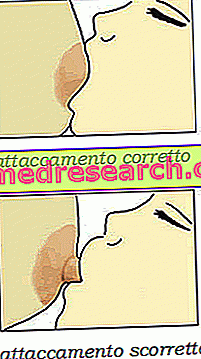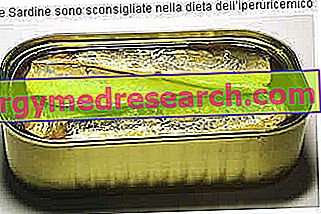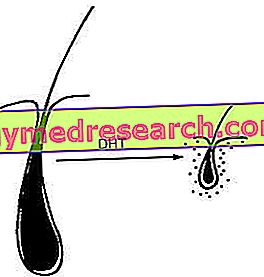Generality
Breast engorgement is a typical problem in the first days after birth. It is characterized by the stagnation of milk in the udder, which appears tense, edematous and shiny, sometimes reddened and painful, however unable to emit significant quantities of milk.
Main causes of breast engorgement:
- Excessive milk production.
- Delay in the start of postpartum breastfeeding.
- Inadequate attachment to the breast by the child.
- Infrequent removal of milk from the breast.
- Excessively strict limits on the duration of breastfeeding.
- Bra too tight or clothes too tight to the chest.
Signs and Symptoms
Often, the breast engorgement is associated with a slight fever rise, for about 24 hours; substantial increases in body temperature are due to a complication, mastitis, characterized by an infection of the mammary gland with the appearance of malaise, circumscribed abscess and high fever.
An udder may appear warm, heavy and tense simply because it is full of milk; in fact, the most important aspect of the mammary engorgement does not concern the appearance of the breast, but rather the difficult release of the milk
. The consequent increase in breast tension is such as to reduce the nipple protrusion, making the baby's attachment more difficult and traumatic.
In addition, insufficient suction aggravates the mammary engorgement, increasing the stagnation of milk in the gland and - in the long run - reducing its production by the female organism.
Causes
After giving birth, the start of the milk set is accompanied by a greater flow of blood and lymph to the breasts, which become swollen, hard, hot, heavy and hypersensitive, if not even painful.

The breast engorgement during the first days of breastfeeding is therefore the result of the increased blood flow in the breast tissue, dictated by the need to support milk production. To prevent breast congestion in the earliest periods of breastfeeding, it is therefore important to attach the newborn to the breast within a few hours of delivery.
In the later stages of breastfeeding, mammary congestion may occur when the child takes less milk than usual, spends too much time between one feed and another, or sticks to the breast inadequately.
Prevention
As explained so far, one of the most common advice given to nurses subject to these problems is to make the child suckle more often, without imposing strict limits on the duration of feedings.
Another typical tip for resolving the breast engorgement is to perform - in the 10-15 minutes before feeding - warm-moist sponging in the breast, or apply warm compresses to it. In this regard, in this document, the pediatrician Duccio Parrini describes the interesting "ploy" of the hot bottle.
After feeding, especially if the pain is intense, it is useful instead to apply cold compresses under the armpits.
Before attacking the baby, it is recommended to use manual juicing, making small quantities of milk come out, to be spread on the nipple to soften the areola and favor the attachment of the baby. Only when the mother produces excessive quantities of milk, so that frequent suction does not reduce the discomfort, or when it is not possible to attack the child often, the use of the breast pump is recommended.
During breastfeeding, massage of the breasts with delicate concentric movements towards the nipple further facilitates milky efflux.
After the feeding, if the woman still feels a sense of fullness and tension of the breast, the milk can be squeezed manually, but without exaggeration, in order to avoid an excessive stimulation to the production of milk.
Finally, allowing yourself plenty of tranquility during breastfeeding is just as useful in terms of preventing breast engorgement.



